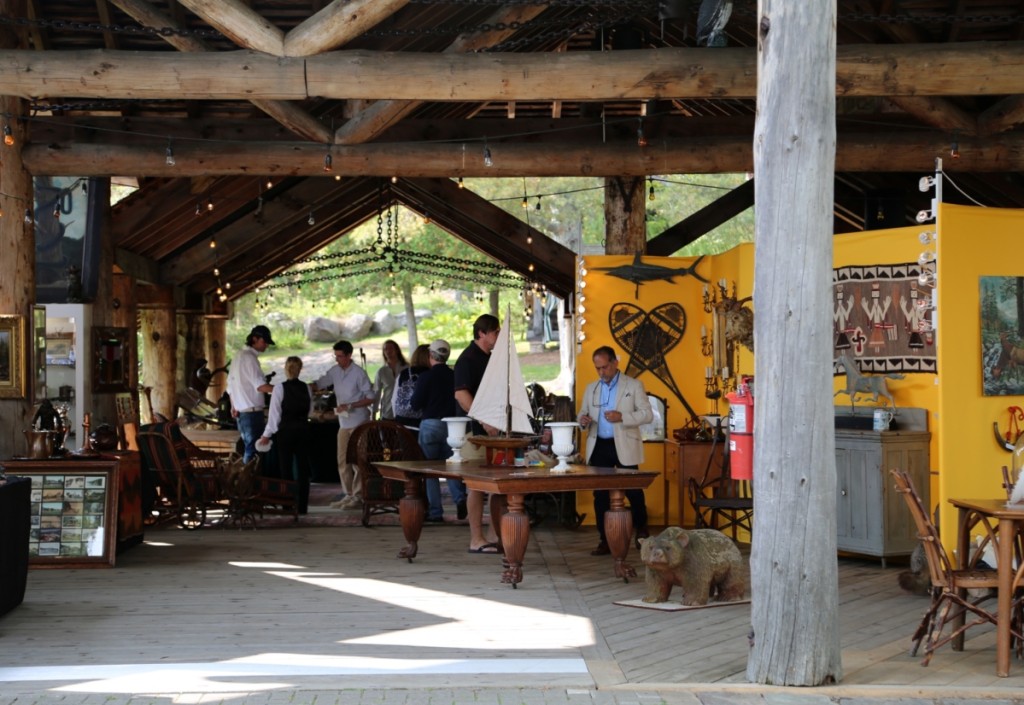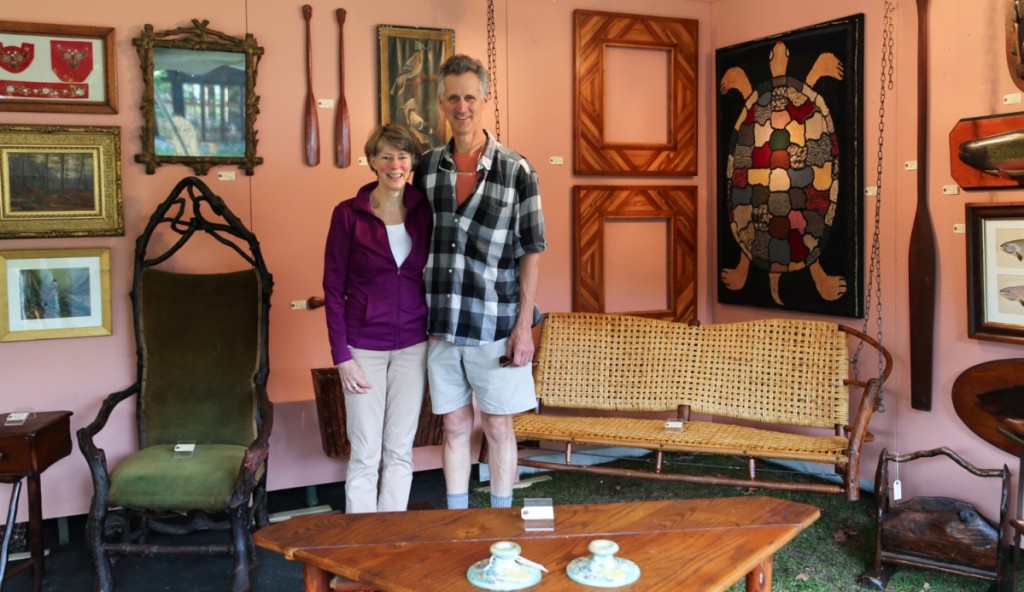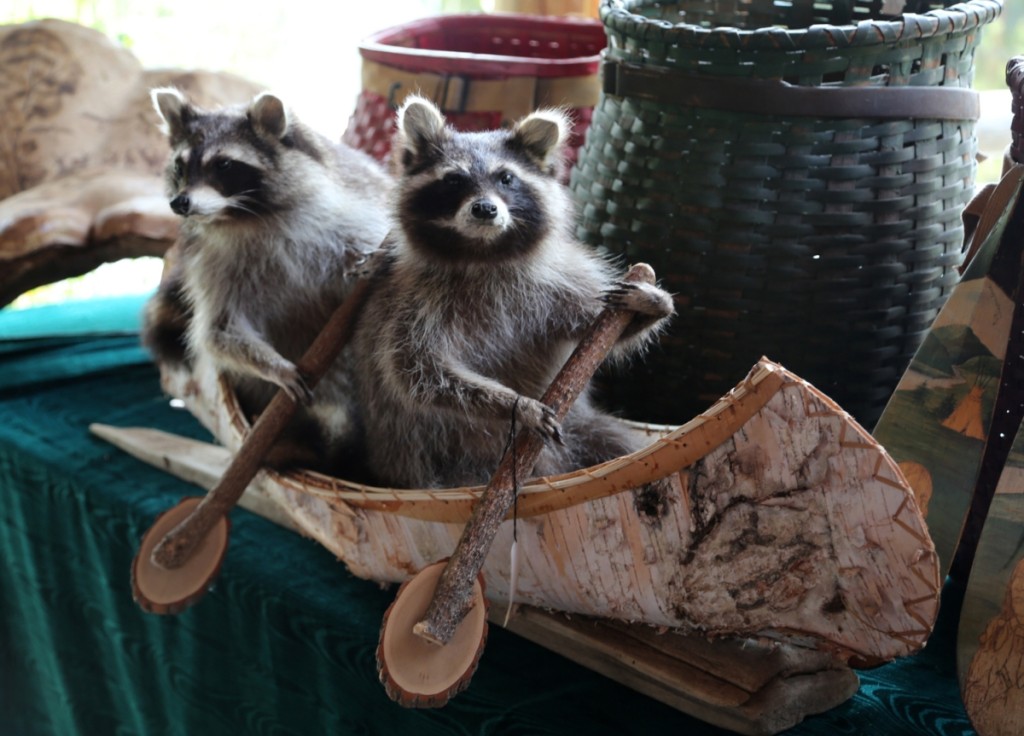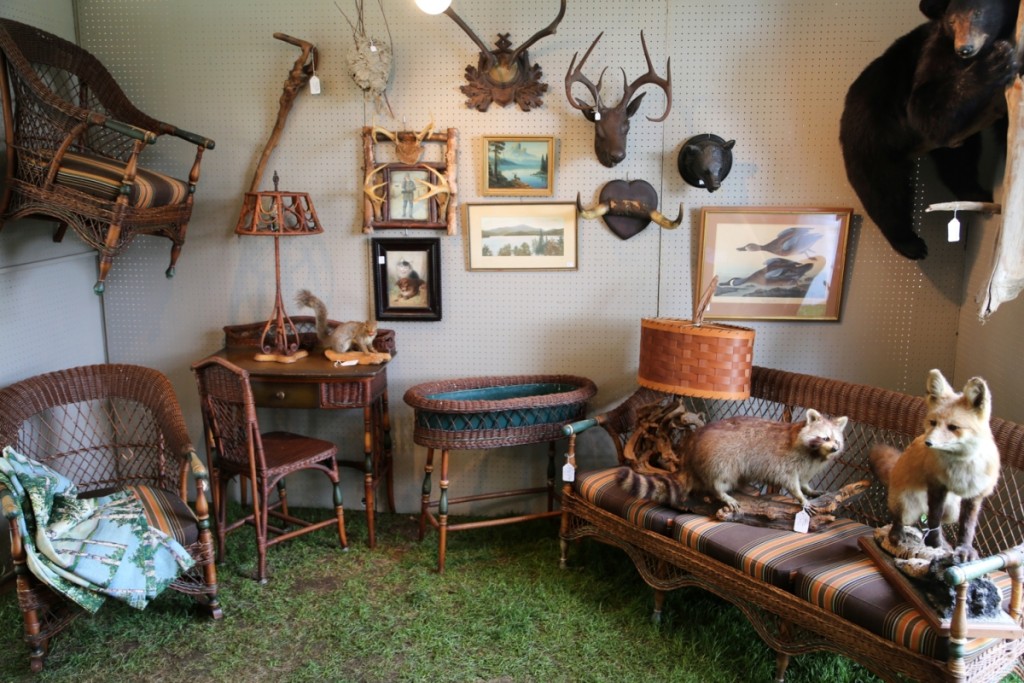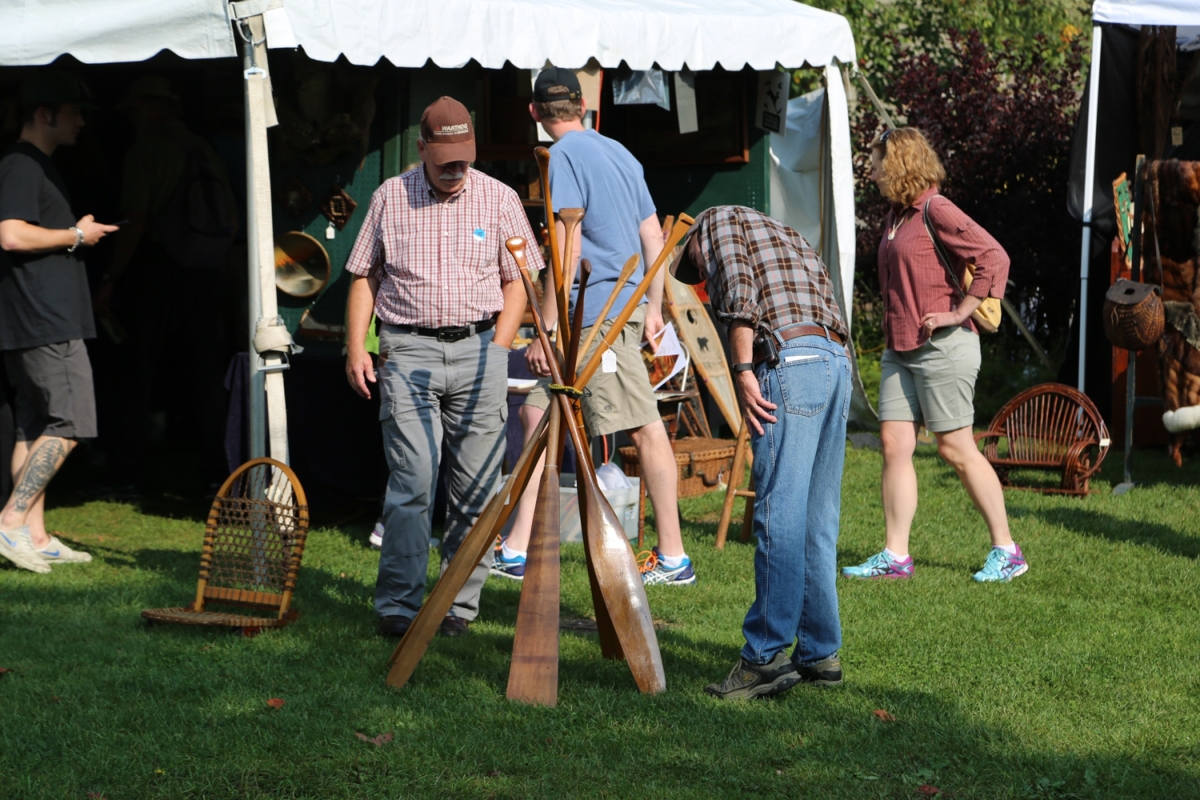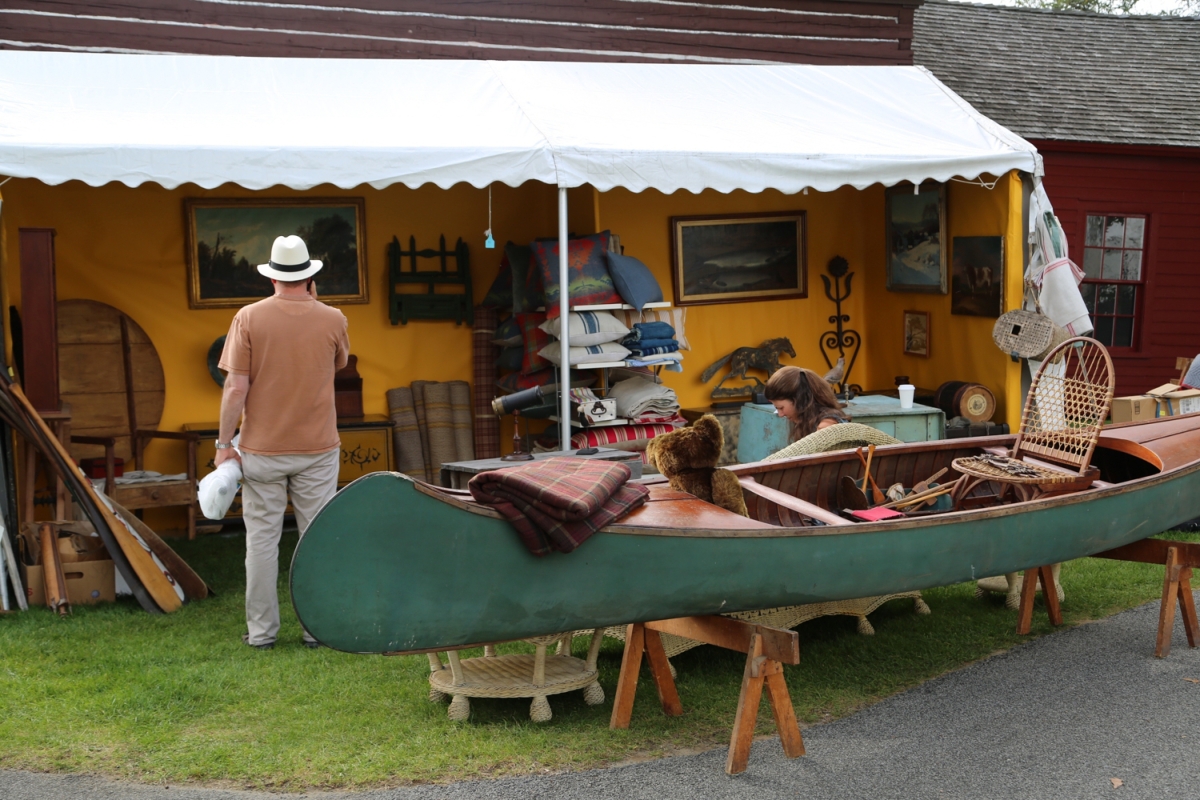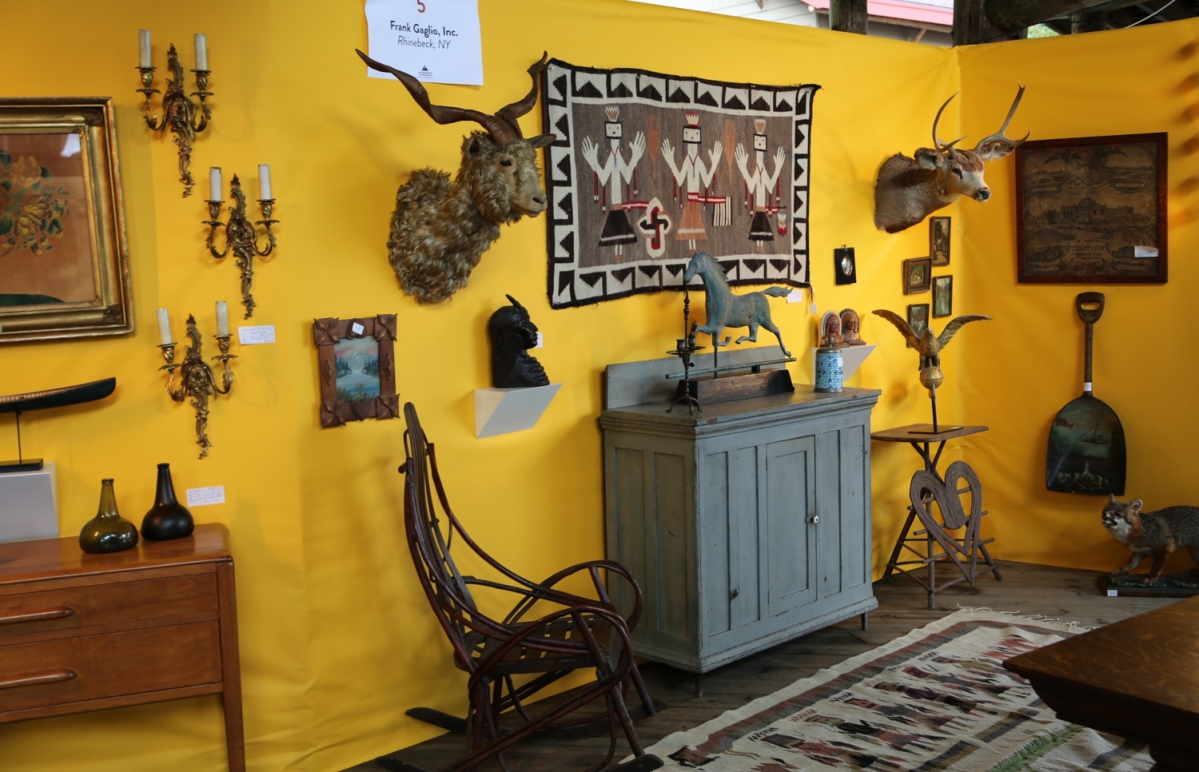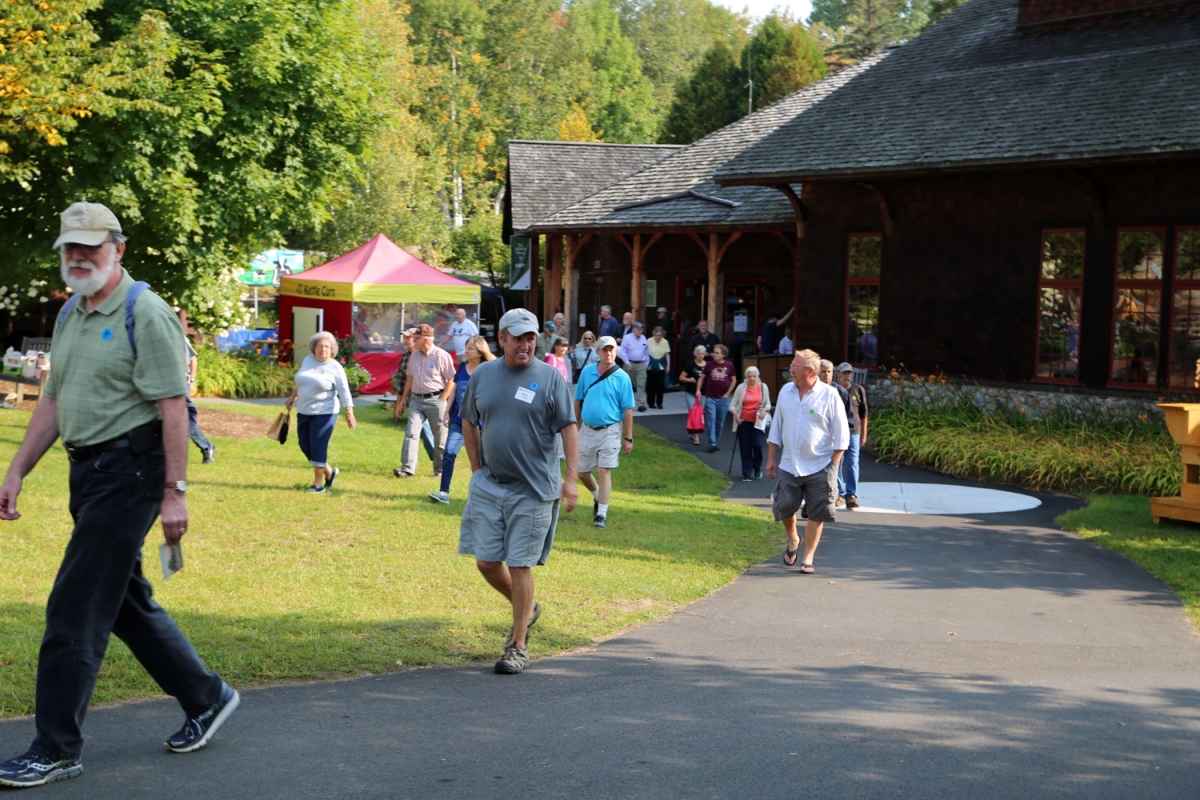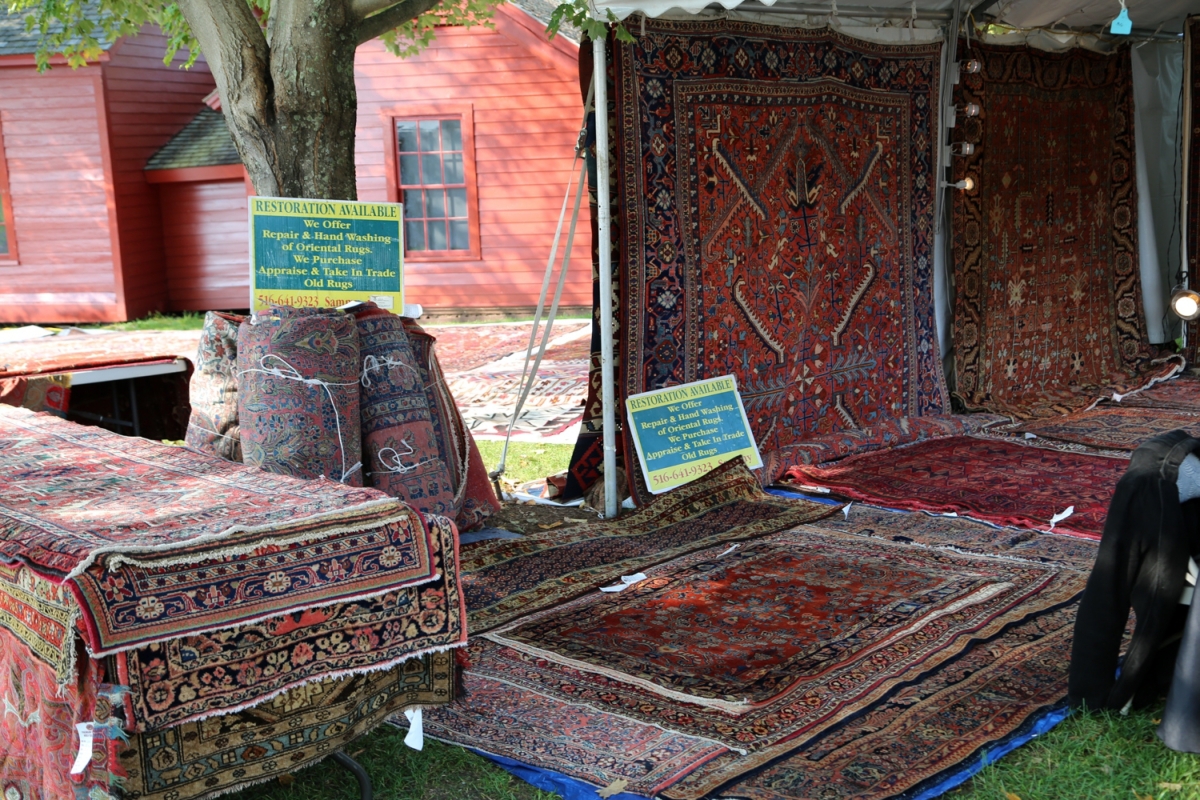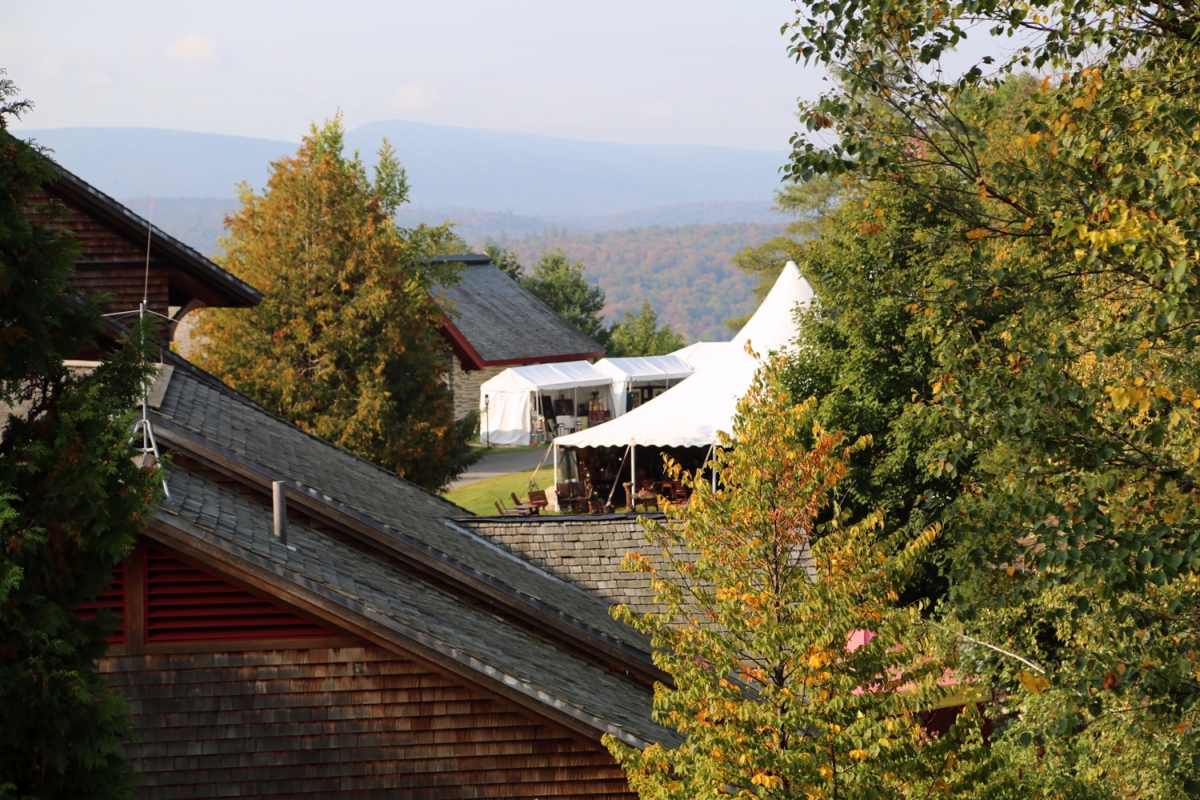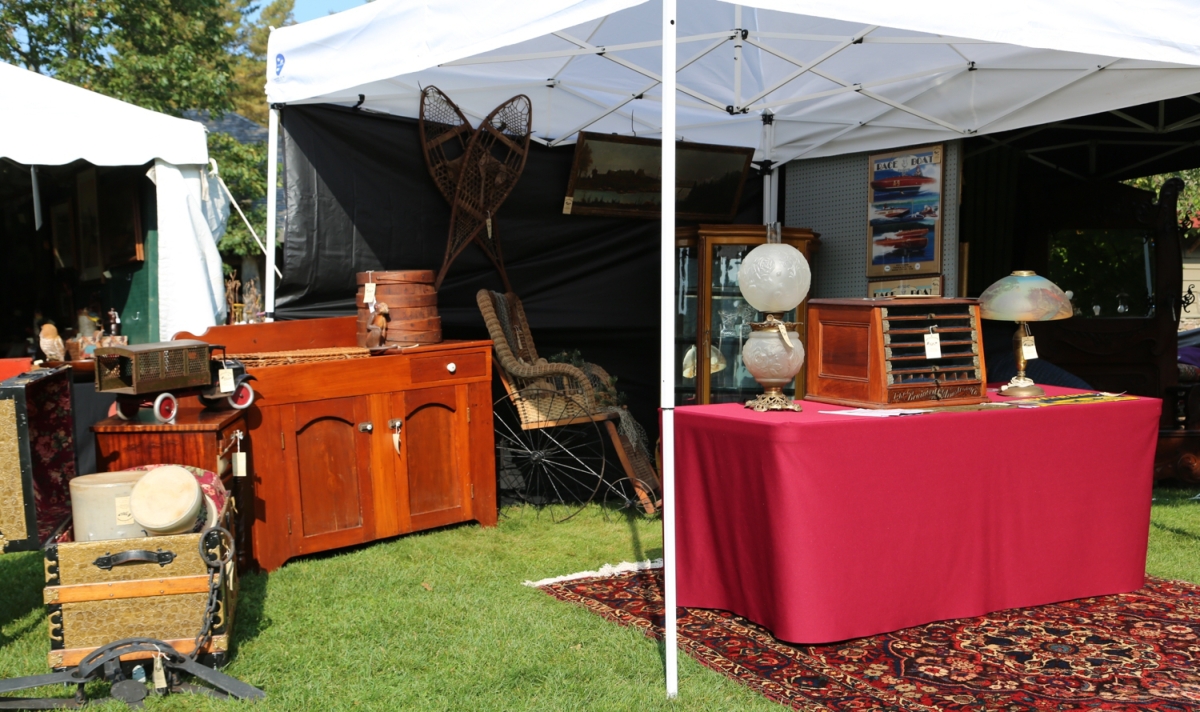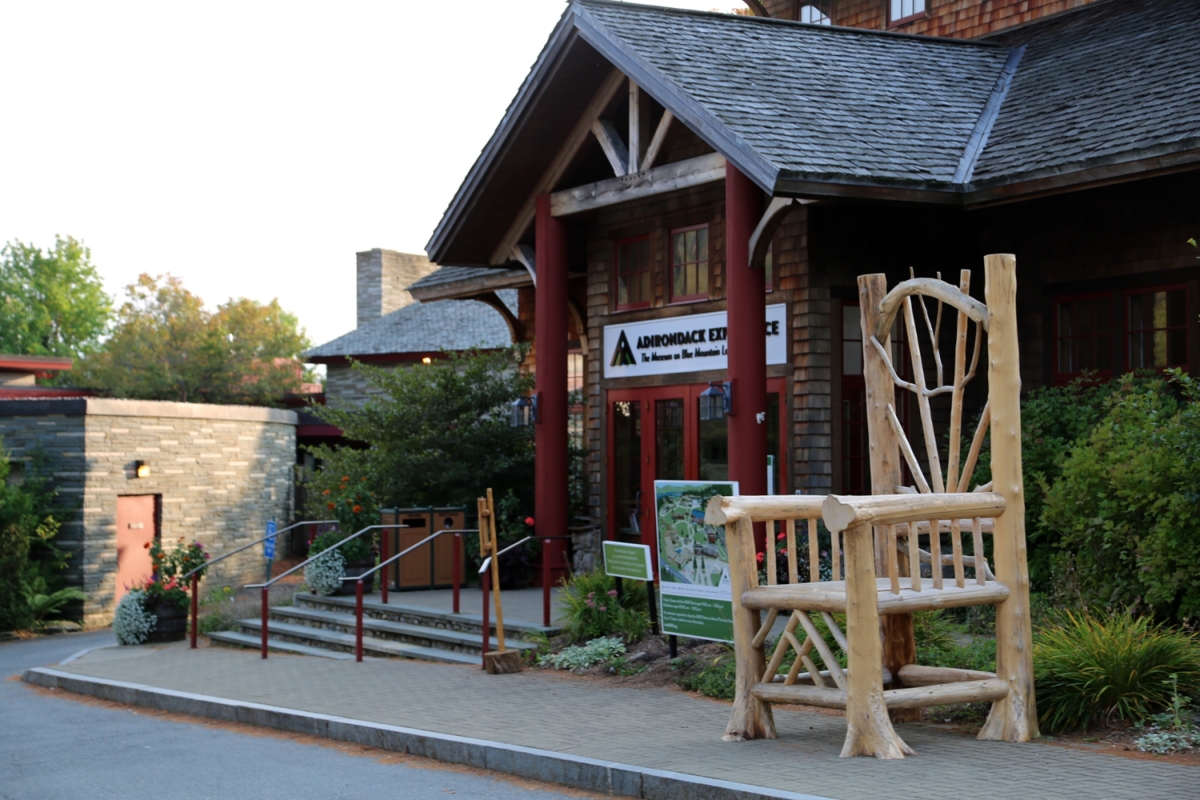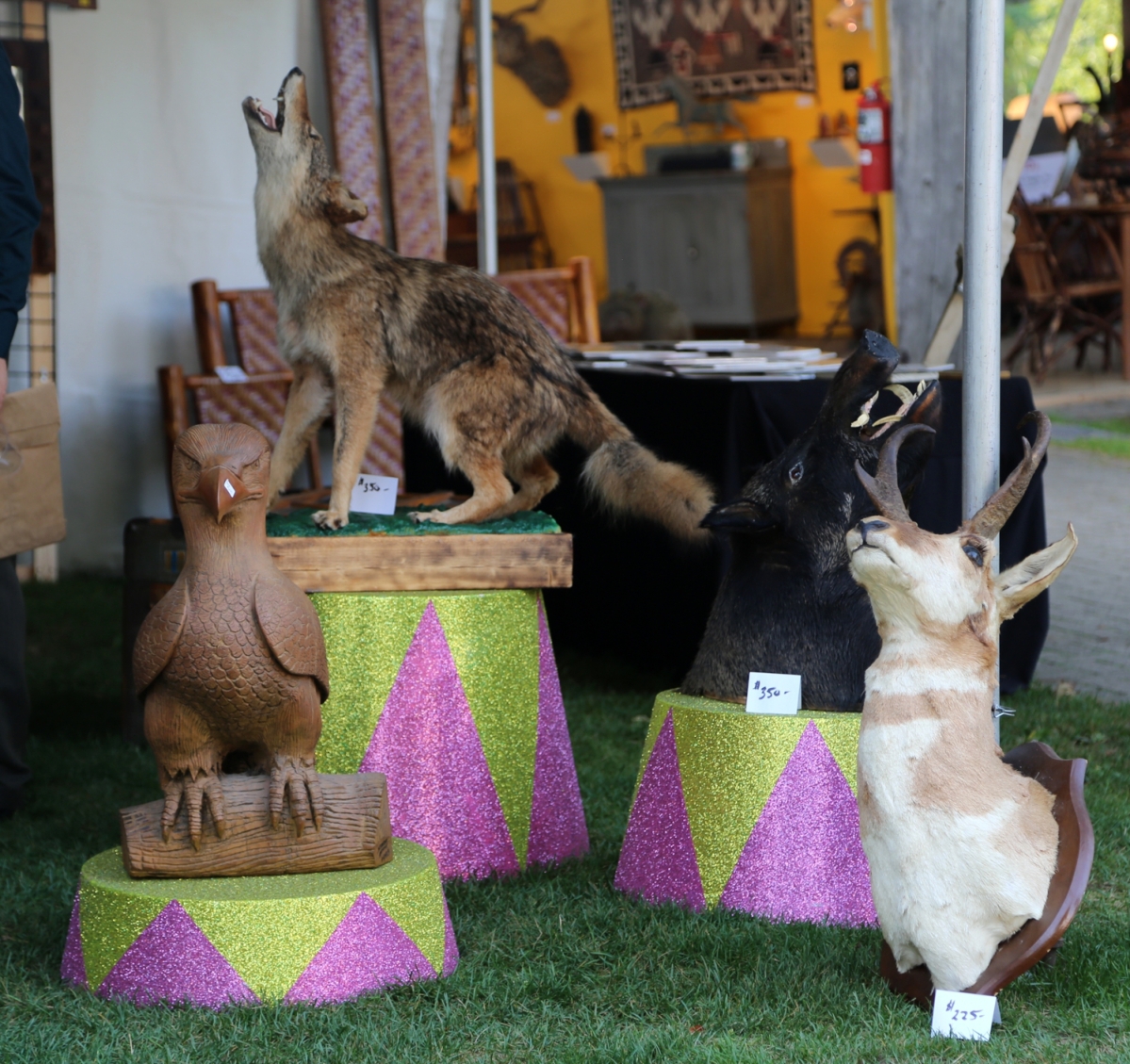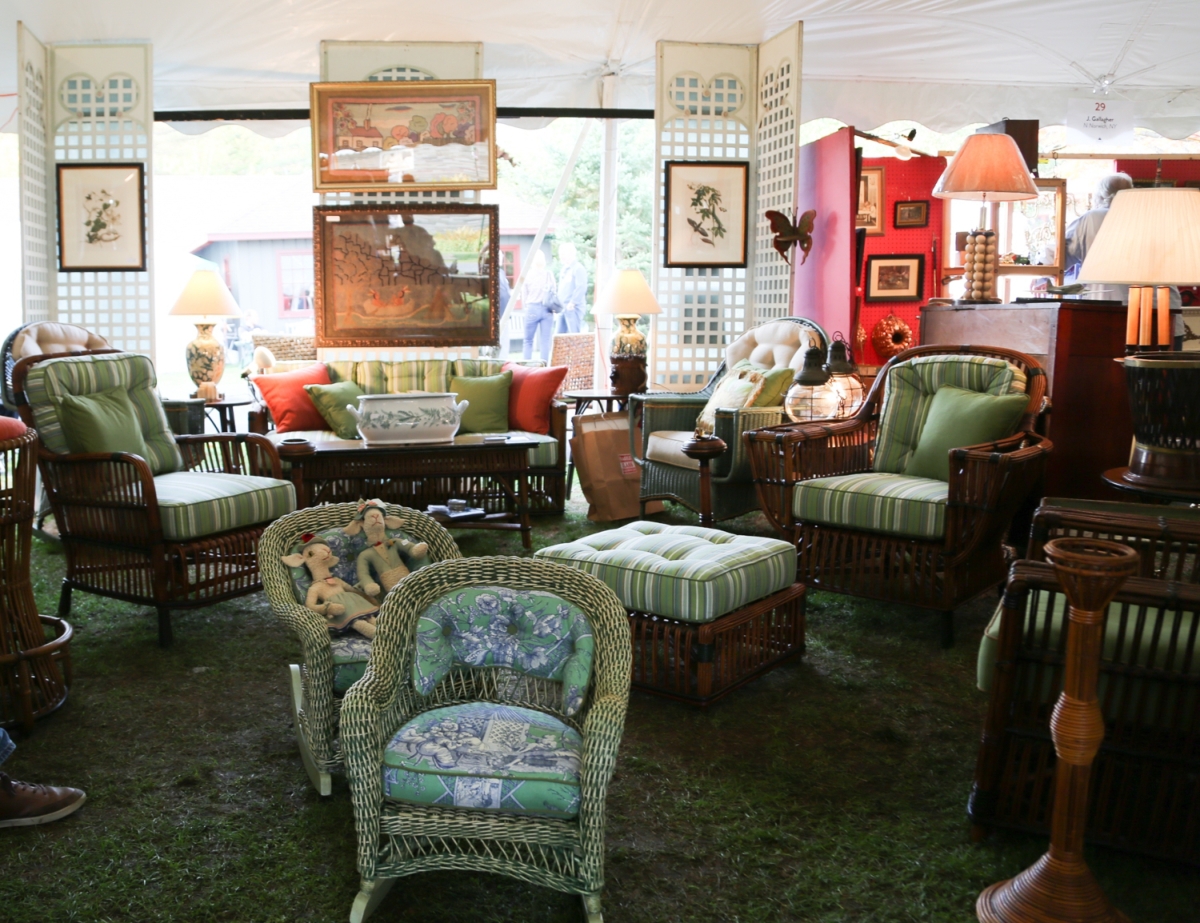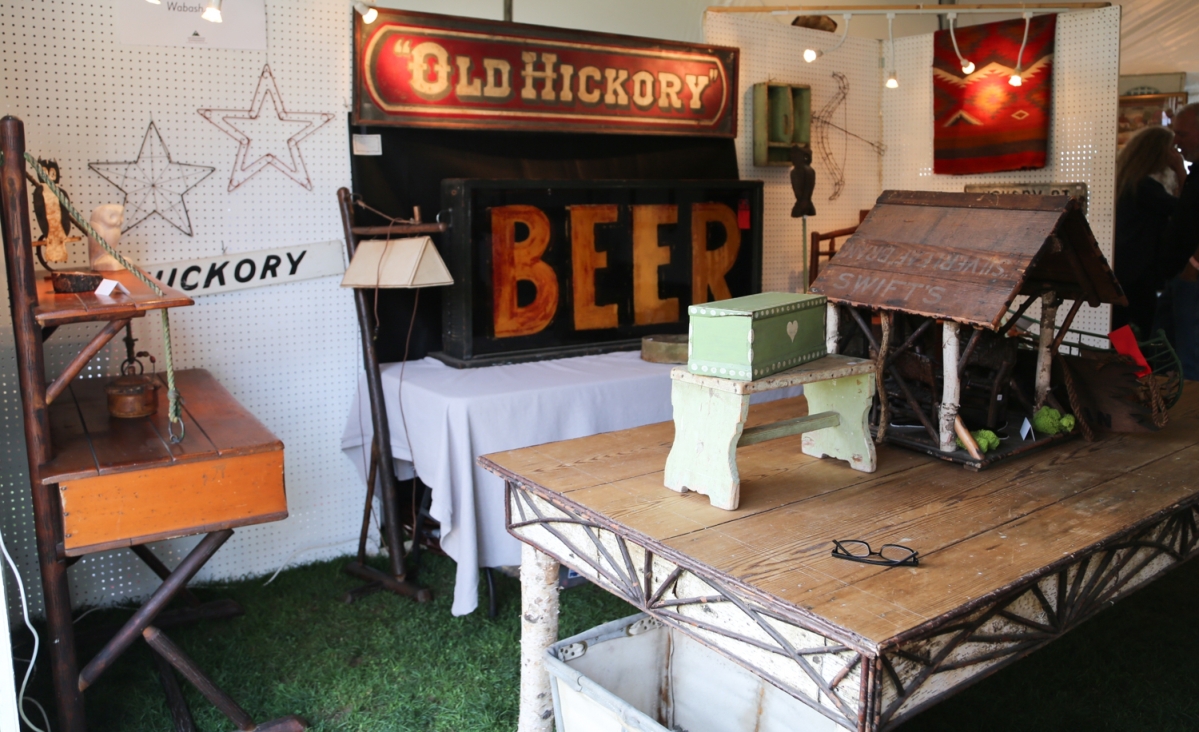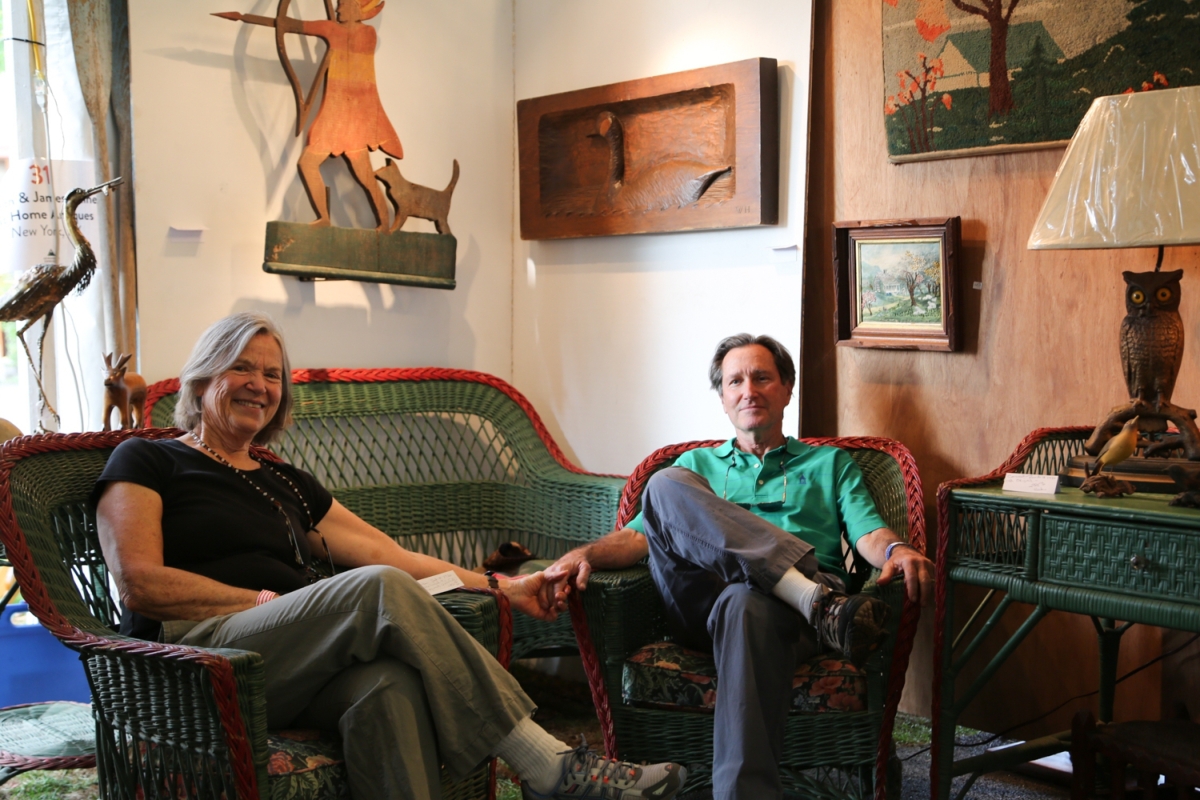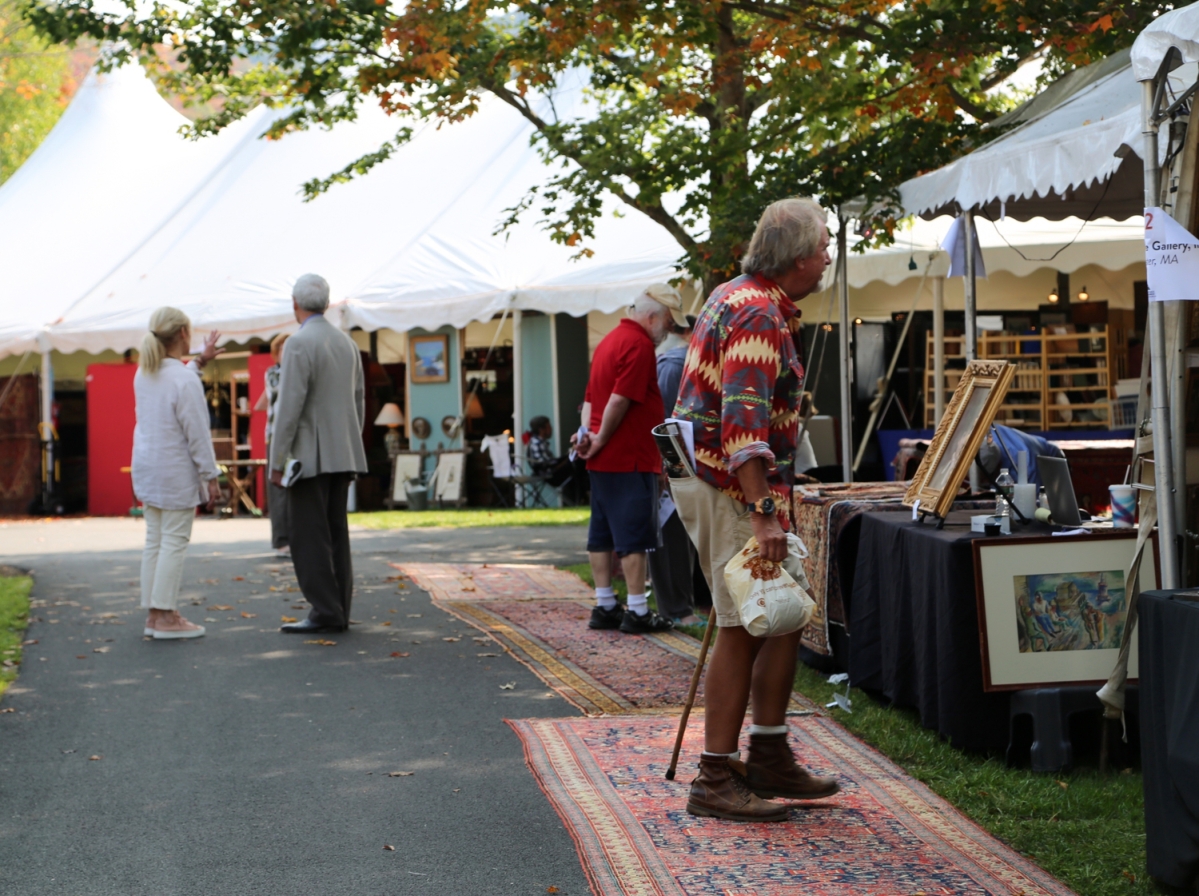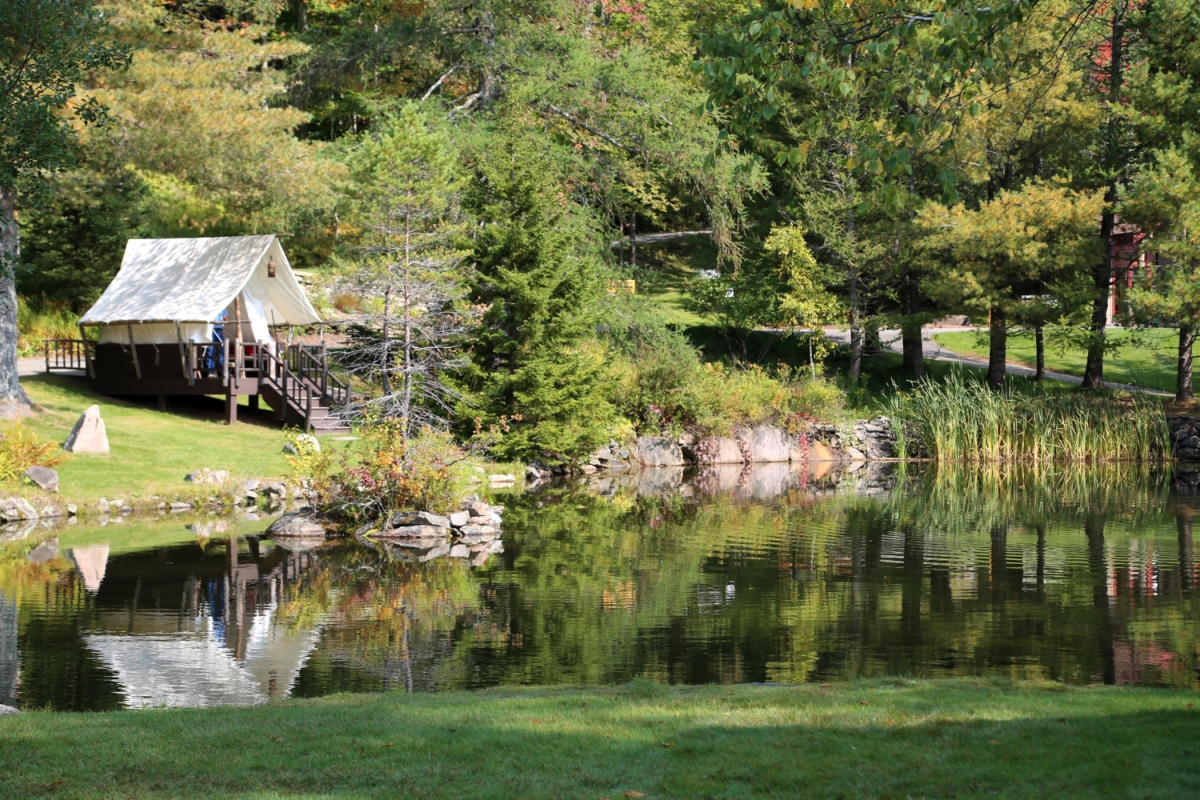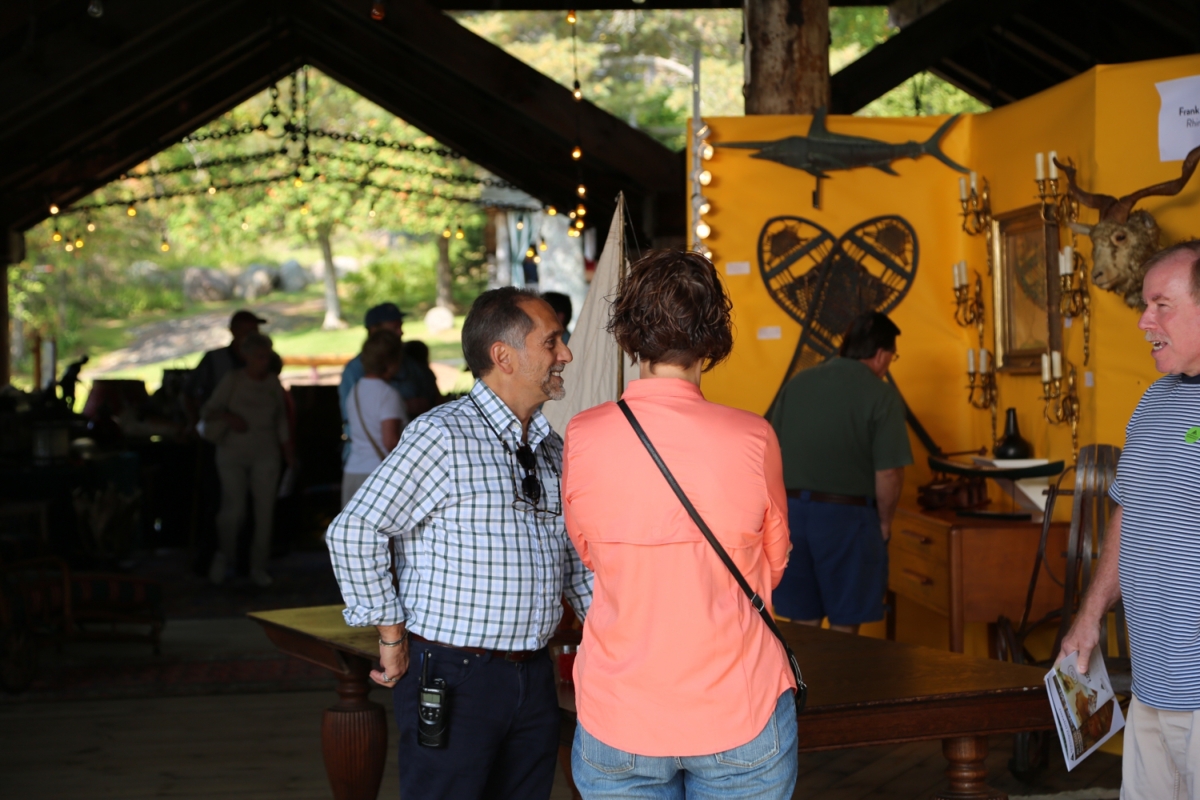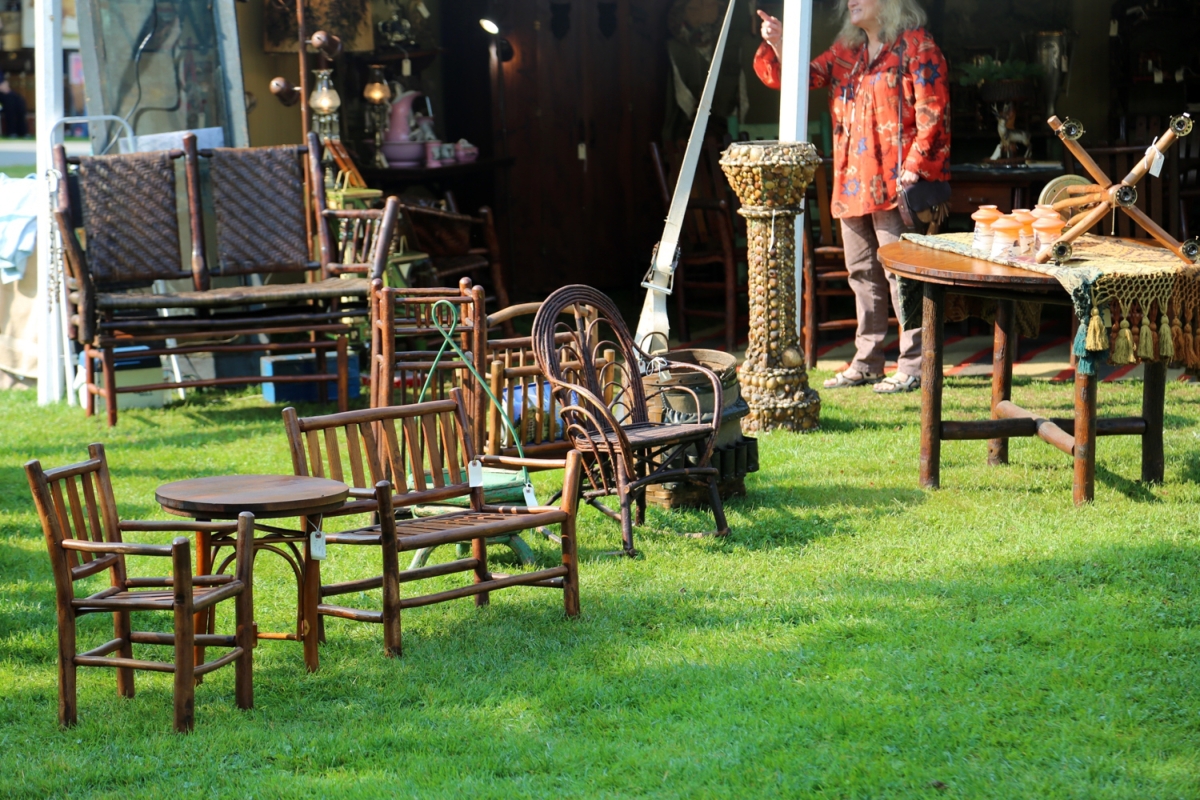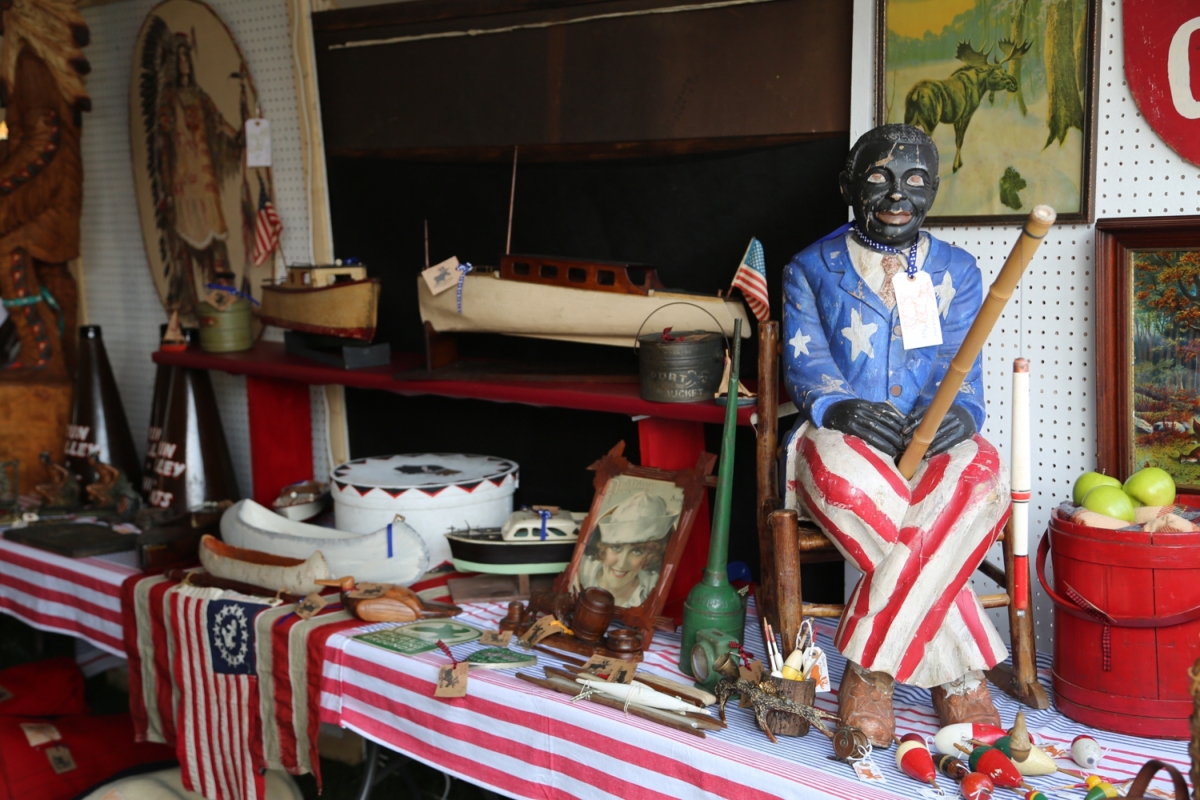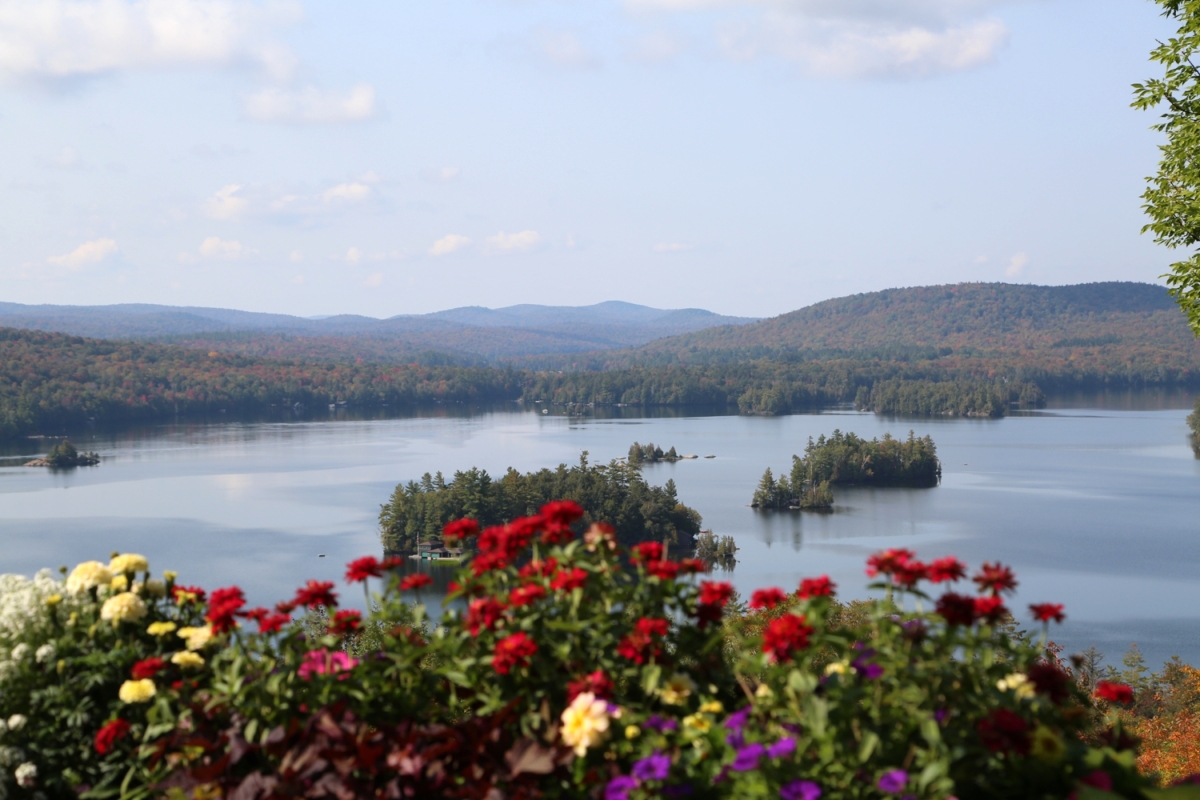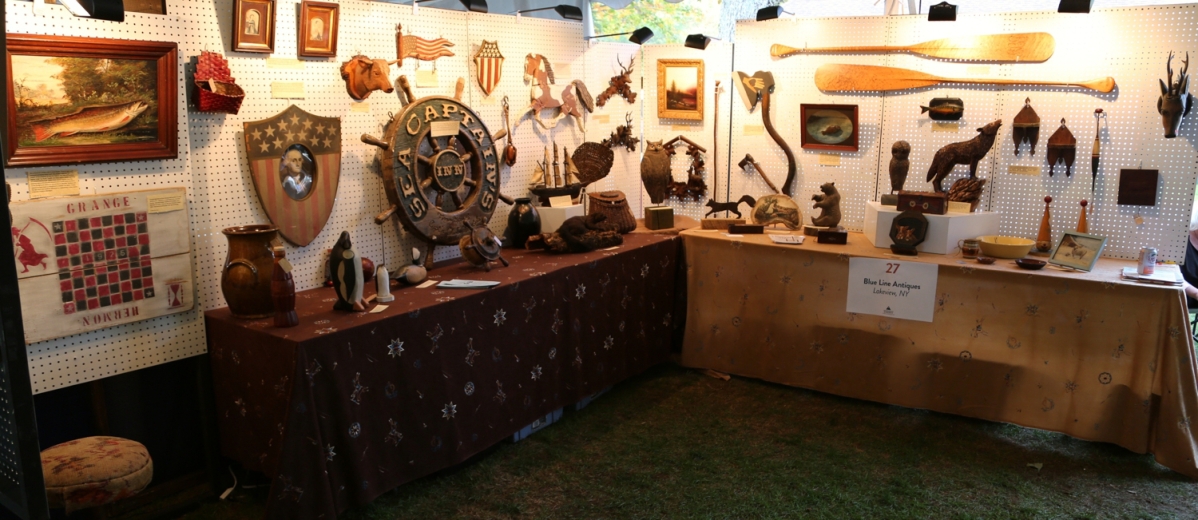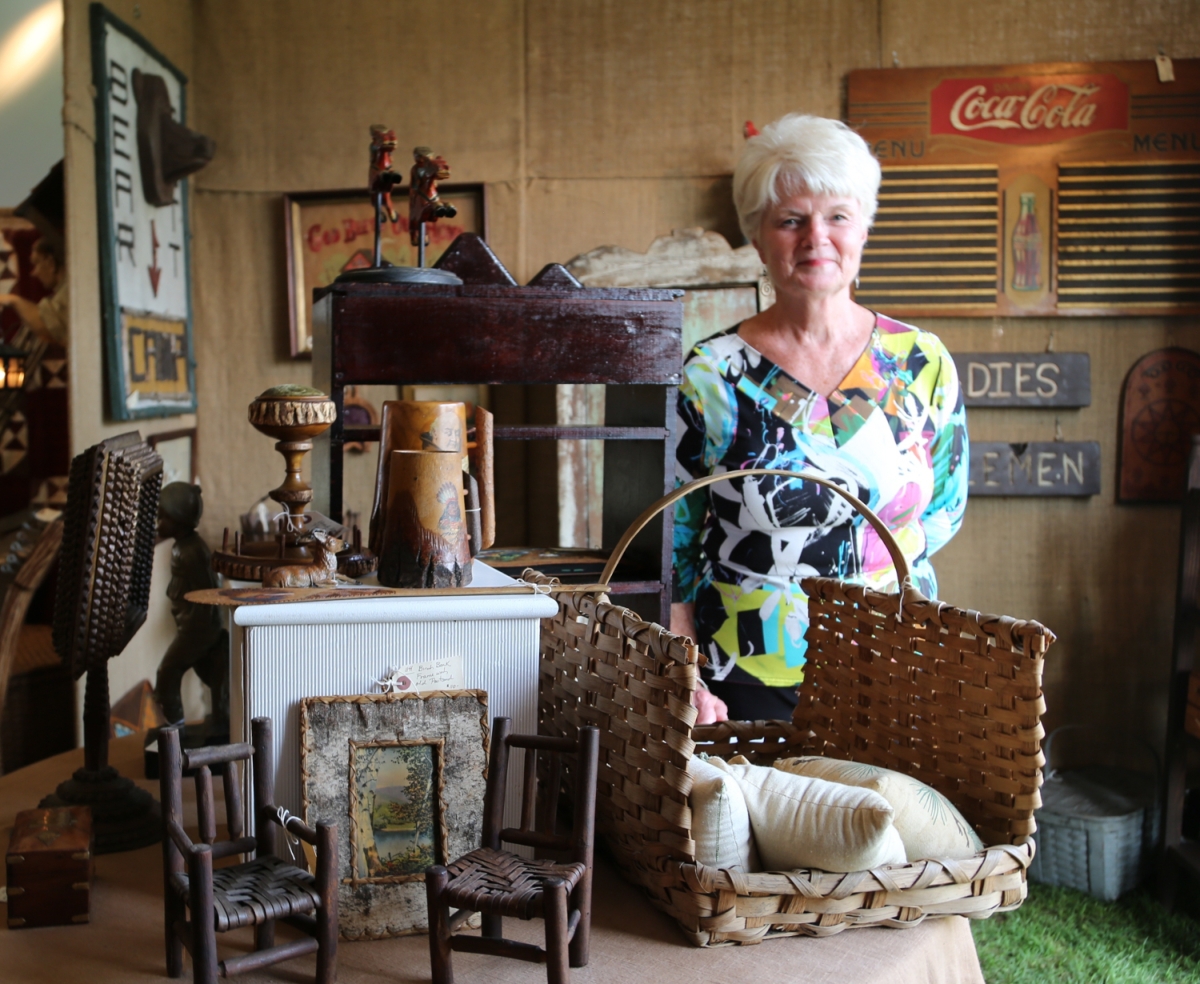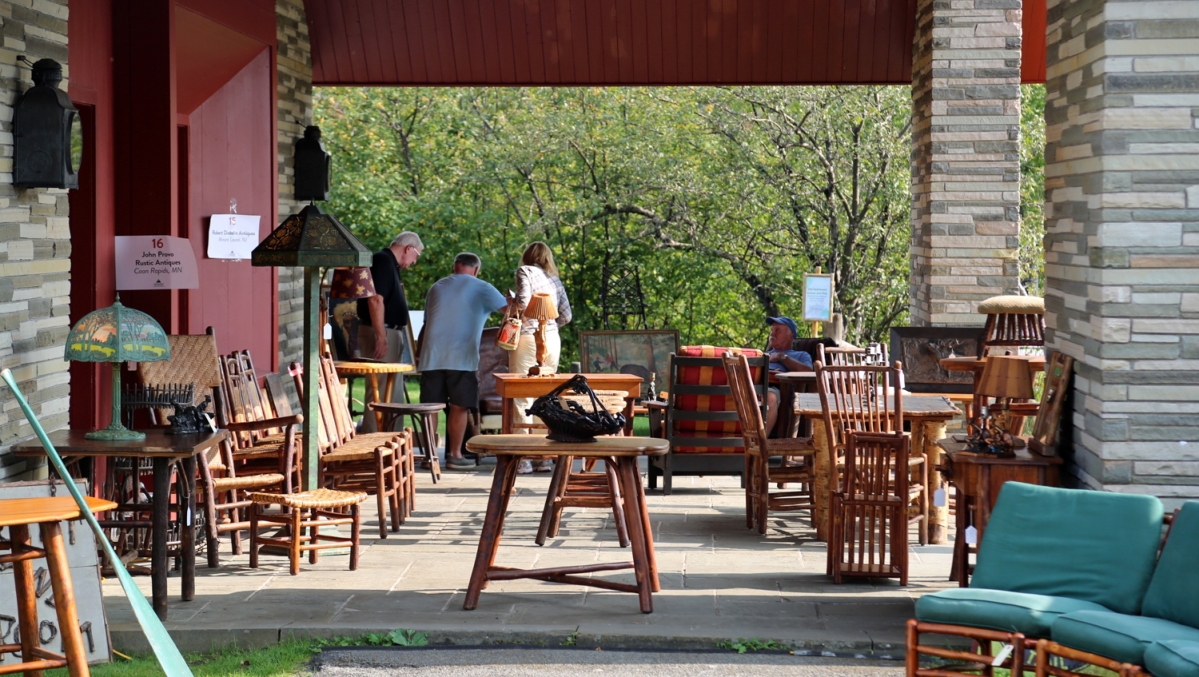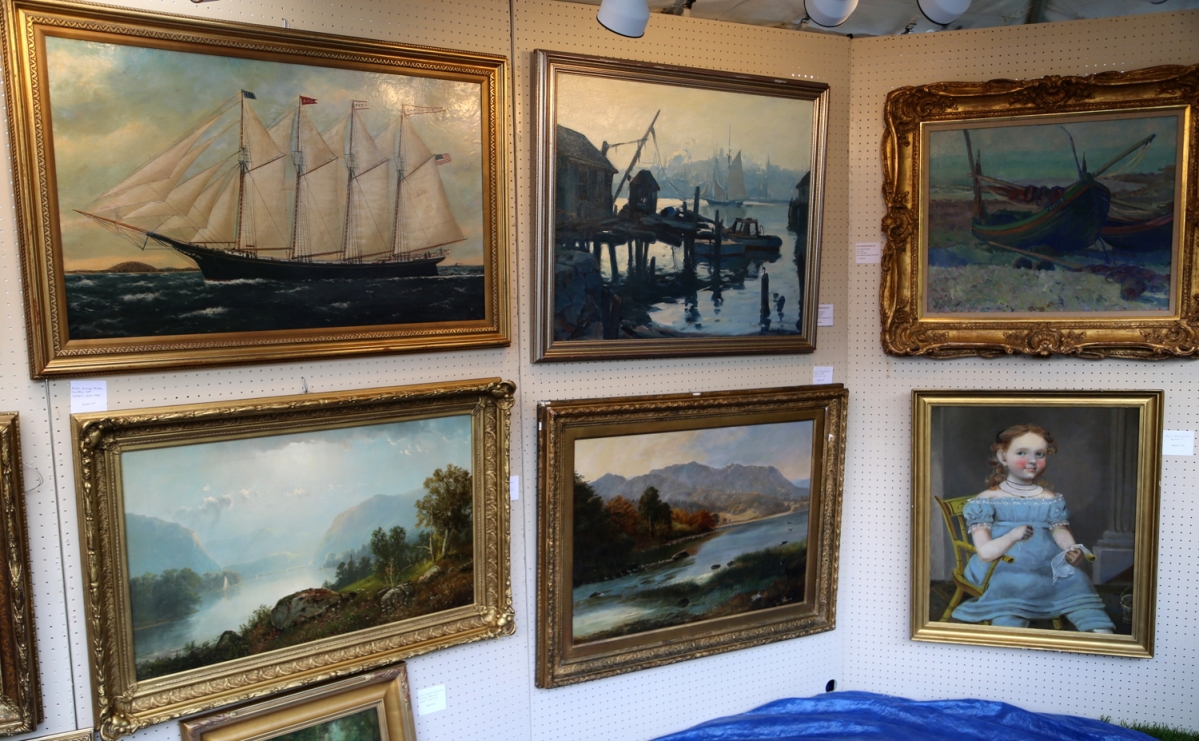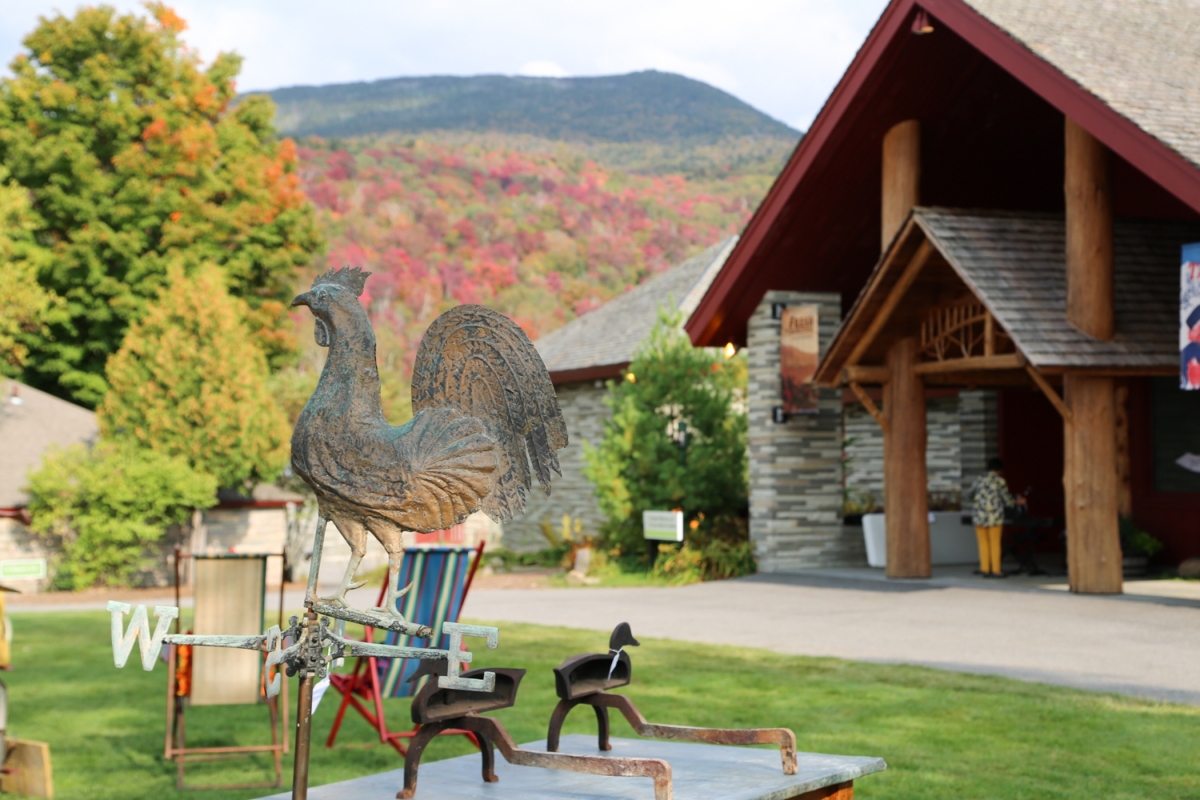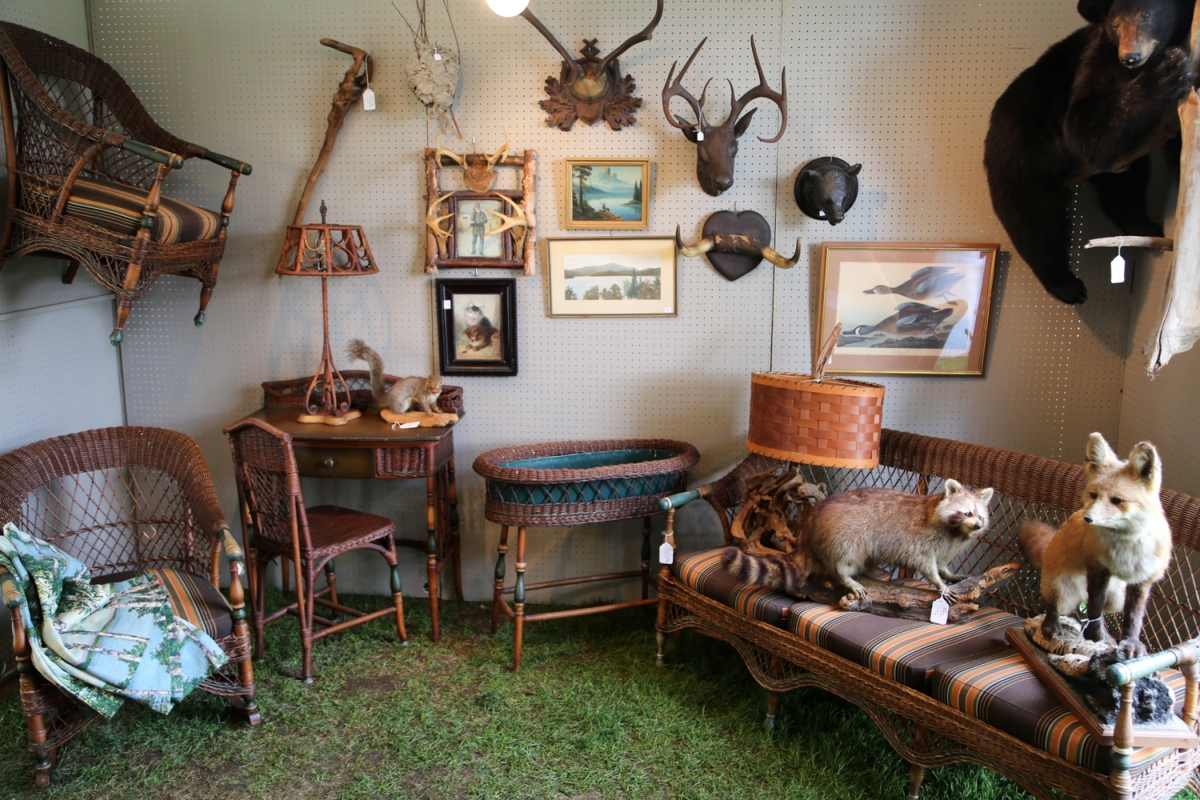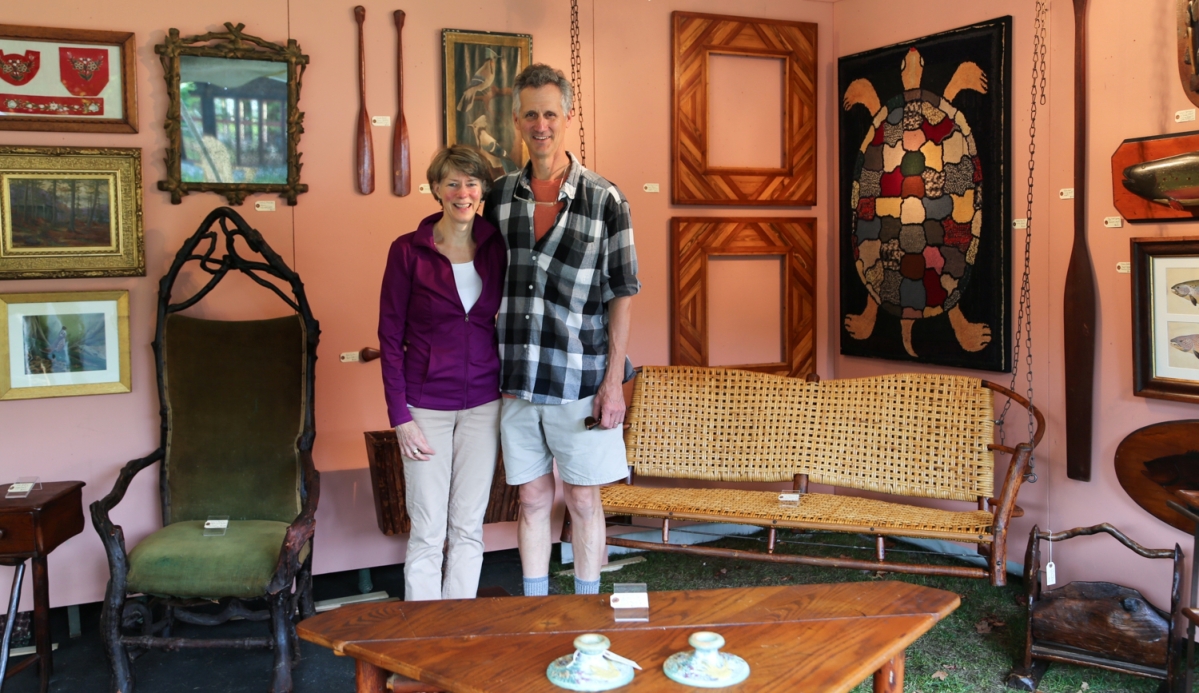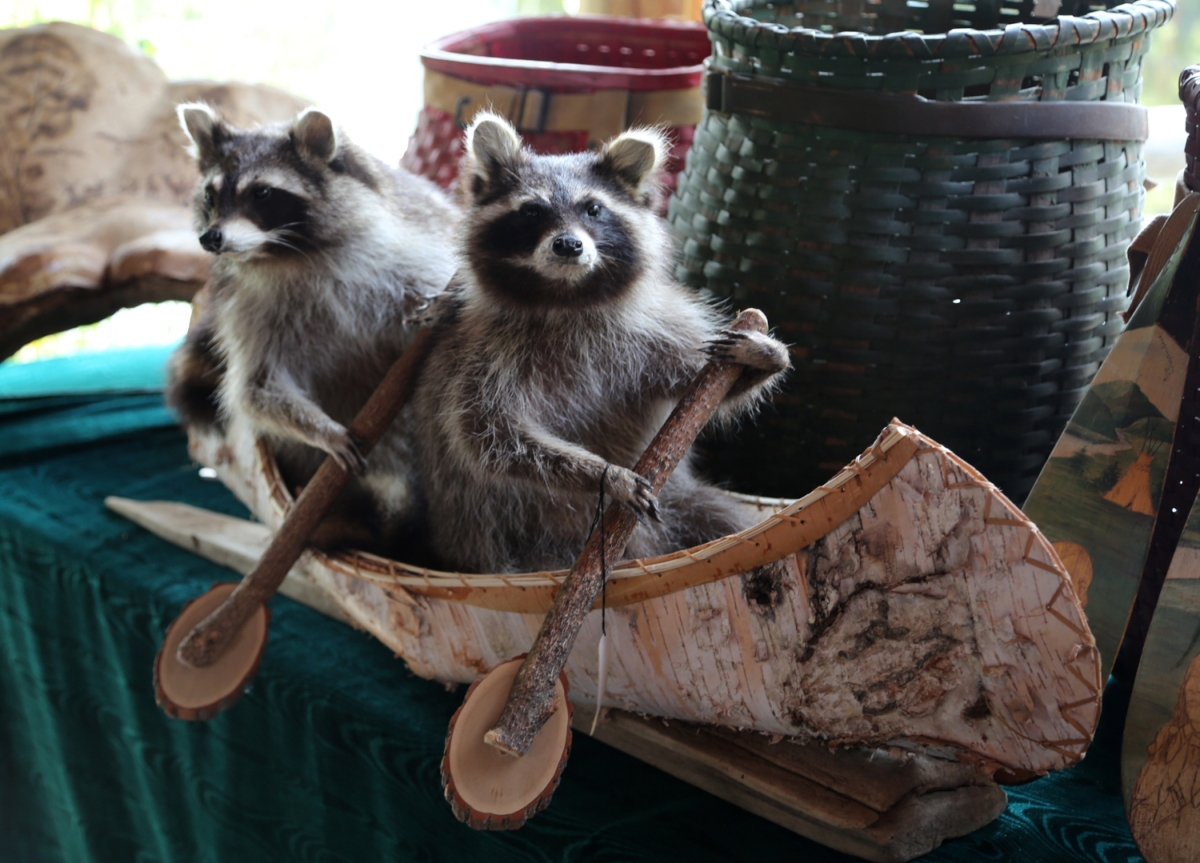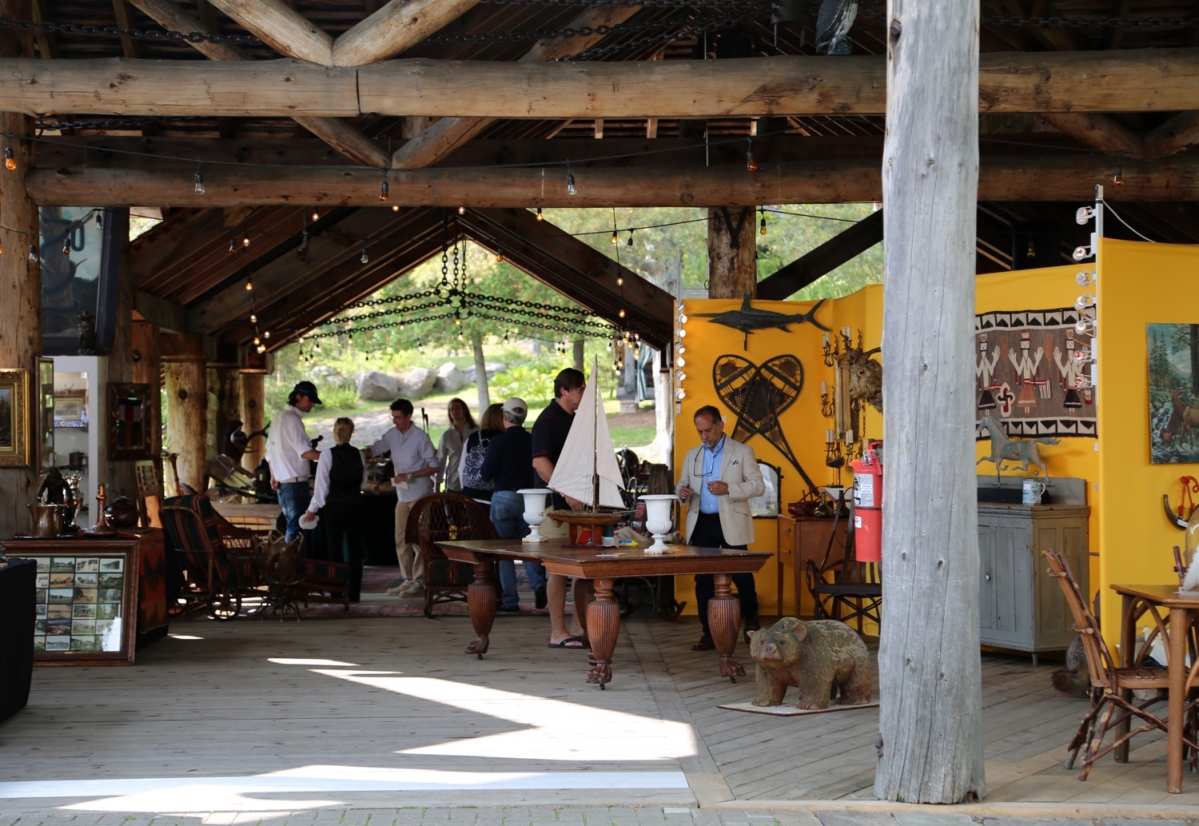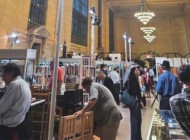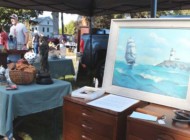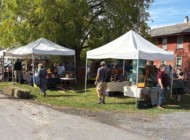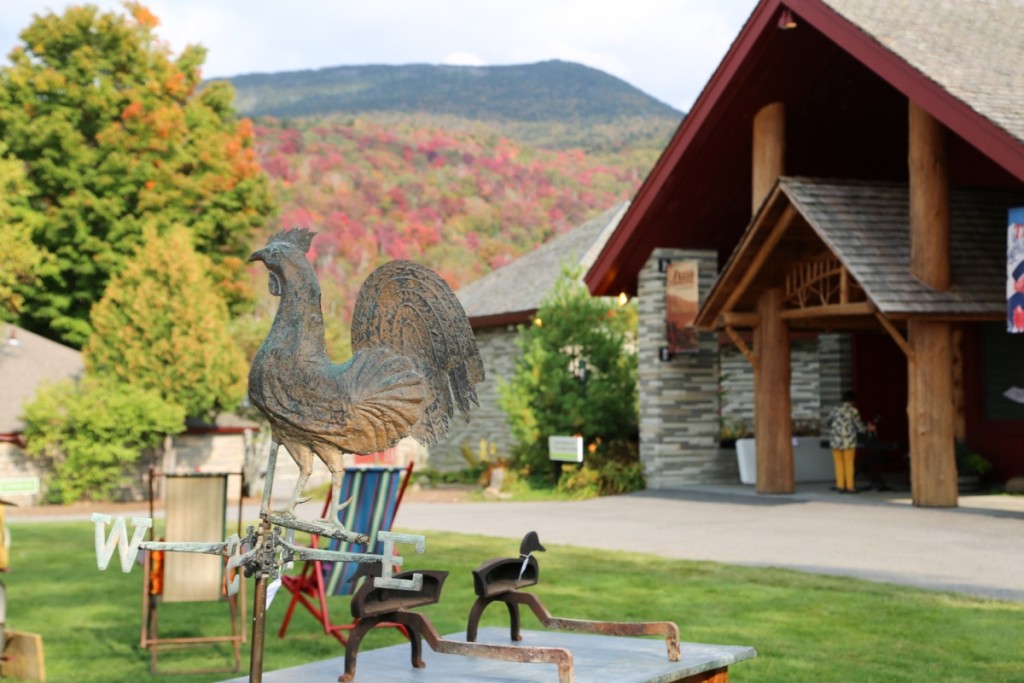
Antiques filled the yard at the show while the colored hills rose steadily in the background behind the museum, making a perfect backdrop for a beautiful show.
Review and Photos by Greg Smith
BLUE MOUNTAIN LAKE, N.Y. – From the nearest interstate exit, the road to Blue Mountain Lake winds through the foothills of the Adirondack Mountains for 50 long and pacifying miles. As we left the highway behind, the mid-September air invited a deep breath, while the smell of pine set in around us and the temperature fixed itself to 75 degrees without a daunting cloud in the sky. Around 20 miles from the lake, the road sidled up to the Hudson River and brought us through the ancient bends of the snaking, 315-mile giant that, at its mouth, was the only thing that connected us back to the business world.
The trees had just begun to paint the landscape with their autumn colors, some already in a blazing red, with others in orange and the majority still green, turning yellow. The road wound through the tunnels of color until it reached its end in the hamlet of Blue Mountain Lake; a right turn up the hill led toward the Adirondack Experience, The Museum on Blue Mountain Lake, which played host to its annual Antiques Show and Sale on September 16. A left turn took us in the direction of our hotel, set on the waterfront with a picturesque scene that has attracted people to the area since the late Nineteenth Century.
The Adirondack Experience, The Museum on Blue Mountain Lake is situated on the western slope of the mountain that is central to the area. Blue Mountain provides a natural, towering backdrop for the show, rising approximately 1,500 feet over the museum to peak at 3,750 feet above sea level. The scene beckons art, as it always has. Rockwell Kent, Arthur Fitzwilliam Tait, Gustave Wiegand and Albert Bierstadt all painted the Adirondacks, and for good reason. It is, hands down, the most beautiful setting for an antiques show that I have had the pleasure of attending.
A unique natural surrounding does well to frame in an antiques show. It is a welcome reprieve from shows that find homes in gymnasiums and basements. The peaks that gently rise and fall on their way up the mountain have always been home to the Adirondack style that can be found in the antiques, art and objects that grace the show floor. The area has forever been parent to the Old Hickory, rustic and cottage furniture that sat in the one-room timber cabins that were spread sparsely throughout its landscape. The taxidermy that hung from the dealers’ walls were born of the same land: moose, coyote, fox, raccoon, wild cats and buck. The twig-decorated pieces and Northeast American Indian objects, the canoes and oars, primitive objects and decorative ones, ephemera and art, all seemed to be from a time that has not quite passed in upstate New York.
David Kahn, the museum’s executive director, was on hand and expressed his appreciation for the show’s unique ability to inspire interest in Adirondack material history, the intersection at which the show and the museum’s mission align.
“There aren’t too many forums for this kind of material,” he said, “so we like to be the place where people can come to see it.”
In the same vein, the museum’s director of institutional advancement and chief organizer for the show, Sarah Lewin, said, “The quality of the show is on par with the collection in the museum, so we complement each other. And it also helps us open up to different audiences. It brings people in who normally wouldn’t come.”
Once folks arrive, it is hard not to get hooked into the museum’s expansive collection that guides people through the lives of those who worked and inhabited the area in earlier times. The exhibitions usher visitors through both industry and leisure, pulling your attention through beautiful displays of boats, fine art, tools and interactive exhibits, full-size train cars and an expansive visual history of the denizens that called the area home.
Visitors to the Antiques Show and Sale were regaled with a broader mix of merchandise than in prior years, though the core of the show has, and always will remain, loyal to the rustic, Adirondack style that has carried it for so many years. It was the first year for Frank Gaglio’s Barn Star Productions as the show’s promoter, and with him came 11 new dealers to buoy up the slots that were left behind by an old guard of exhibitors that had slowly moved on. In all, the show hosted more than 30 exhibitors.
Much like the layout of the various buildings that house the museum’s collections, the exhibitors were spread throughout the central courtyard. Half of the dealers were in the large tent at center, with the others along the perimeter, most in smaller tents, while a few fortunate exhibitors worked their booths into the museum’s outbuildings.
One of the hometown dealers, the Adirondack Store and Gallery, Lake Placid, N.Y., was set up between the museum’s 1880 Adirondack steamboat and the Raquette Lake Transportation Company engine. Among the dealer’s display of lighthearted taxidermy – including two raccoons in a miniature canoe, each rowing with an oar in their paw, as well as the standard fare of fox and bobcats in regular pose – was a Nineteenth Century dog carrier for ocean travel, with wood construction and a mesh wire window on the door. An impressive replica of a train car from the Northern Adirondack line attracted visitors to the booth, as did an opalescent spiral glass lantern with a black painted metal frame, which earned a sold tag at the early buying preview gala the night before the show opened.
It was Bill Union’s first time exhibiting at the show, and the Worcester, Mass., dealer brought a selection of fine art featuring expansive lake and mountain scenes from his inventory at the Art & Antique Gallery. Among them was a foothills landscape from Alexander Wyant (1836-1892) that Union confirmed was painted in the area. Also included on his walls were Hudson Valley scenes, a watercolor by Thomas Hart Benton and an Impressionist painting featuring a fishing boat shored up on the beach by Theodore Earl Butler, whose father-in-law was Claude Monet.
Don Heller from Heller Washam Antiques, Portland, Maine, was leaning a pile of merchandise on the tree outside of his booth in the opening hour of the show. All had sold, including two pairs of oars, a steam engine boat model and a copper architectural finial with a sword at center and foliate arching to the top on each side. Among his offerings of landscape paintings, copper weathervanes and painted chests was a pair of sunflower-form iron wall appliques, with scrolling elements that worked their way down to the ground, about 5 feet tall.
John Provo Rustic Antiques, Coon Rapids, Minn., and Robert Dodelin Antiques, Mount Laurel, N.J., joined forces under a covered patio on the side of one of the museum’s exhibition buildings. The dealers showed off an extensive inventory of rustic furniture, lighting and trade signs. Dodelin was relaxing in a quartersawn oak rocking chair when I approached and he invited me to sit nearby, in one of the other 20 chairs he had on offer. By the time we spoke early in the morning, a red tag already graced a set of eight Old Hickory dining chairs with woven seats and smoothed wood frames.
“We’ll do this show until the very last one,” affirmed David Zabriskie, Lake Placid, N.Y., recounting his adoration for the event that he has exhibited at since the very first edition. In the earlier days of the show, his booth was in a lean-to that no longer exists on the grounds. Now he resides in the corner of the central tent, a place that fills up quickly when the opening bell rings. “You couldn’t even walk through here,” said the dealer, as he described the opening flurry, chalking up a few sales, including a rustic bench, a piece of Black Forest, a pair of andirons-turned-lamps and a stained glass window.
Blue Line Antiques, Port Leyden, N.Y., was right across the way, with an attractive booth of antiques and art objects. A pair of presentation paddles in a rich, golden bird’s-eye maple were displayed across the back wall. They dated to the early Twentieth Century and were made by a Huron Indian for a friend. The dealer’s sales receipts revealed a buying trend: animals were hot. Sold were a few carvings, including multiple deer and a woodpecker, as well as an iron penguin doorstop.
After rummaging through Dordy Fontinel’s booth, which was chockfull of tramp art, baskets, miniature Old Hickory chairs and signage, the Nellysford, Va., dealer turned my attention to a pair of reverse painted lamps, each with an Indian chief’s heads at its base. The only thing she had done was to rewire them, she explained, as she pointed out the original paint on the inside and the detail all over the metal base. There was a woman standing in the booth, listening to Fontinel talk, but keeping her distance until the dealer was through. Directly after I left the booth, the woman walked over to the lamps and took them home with her.
As the sun set that night behind the low-rising hills, changing from a molten orange to a fluorescent pink, and the Milky Way laid bare every star against a black sky, I could not help but to hope for one last thing: that I get this assignment next year.
For additional information, www.theadkx.org/exhibitions-events/antiques-show-sale or 518-352-7311.

